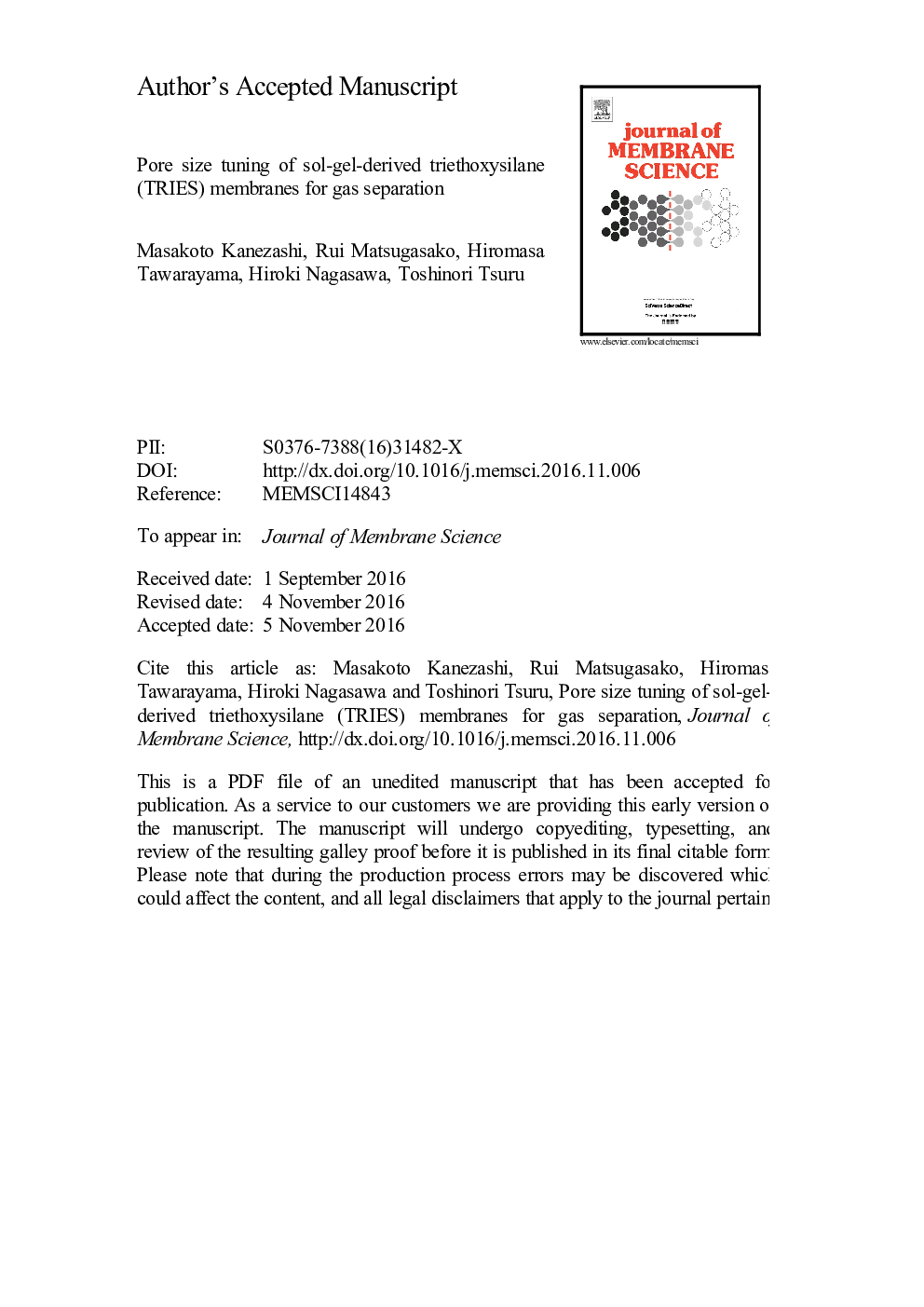| Article ID | Journal | Published Year | Pages | File Type |
|---|---|---|---|---|
| 4989194 | Journal of Membrane Science | 2017 | 29 Pages |
Abstract
Triethoxysilane (TRIES), which consists of three ethoxy groups and a Si-H bond as a pendant-type alkoxysilane, was utilized as a Si precursor for the fabrication of a gas separation membrane. The effect of membrane fabrication parameters such as sol preparation conditions and calcination temperatures on Si-H groups and network structures was evaluated. The degree of dehydrogenation of Si-H groups in aqueous solution was independent of the H2O/Si molar ratio in the sol, but the degree of hydrolysis and polymerization of ethoxy groups (-OEt) depended on the H2O molar ratio. TRIES membranes calcined at 550 °C under N2 showed a decrease in network size with an increase in the H2O/Si molar ratio in the sol. The TRIES-derived network pore size also depended on the calcination temperature, and the network size was decreased under lower calcination temperatures. For example, a TRIES membrane calcined at 550 °C showed high selectivity for He/N2 and H2/N2 at approximately 1000 and 600, respectively, however, in the case of calcination at 300 °C, Knudsen diffusion dominated for small molecules (H2/N2 selectivity: 4.3) and molecular sieving favored large molecules (H2/CF4: >100, H2/SF6: >400). When a TRIES membrane was fabricated by calcination at 300 °C, most Si-H groups were still present in the networks, the estimated network pore size for the TRIES membrane was 0.577 nm, which was larger than that of a tetraethoxysilane (TEOS) membrane calcined at 350 °C (0.426 nm). On the other hand, when TEOS and TRIES membranes were fabricated at 550 °C, both membranes showed approximately the same network pore size (TEOS: 0.385 nm, TRIES: 0.382 nm), due to the dehydrogenation of Si-H groups in the formation of Si-OH groups as well as for the forming of a Si-O-Si bond.
Related Topics
Physical Sciences and Engineering
Chemical Engineering
Filtration and Separation
Authors
Masakoto Kanezashi, Rui Matsugasako, Hiromasa Tawarayama, Hiroki Nagasawa, Toshinori Tsuru,
